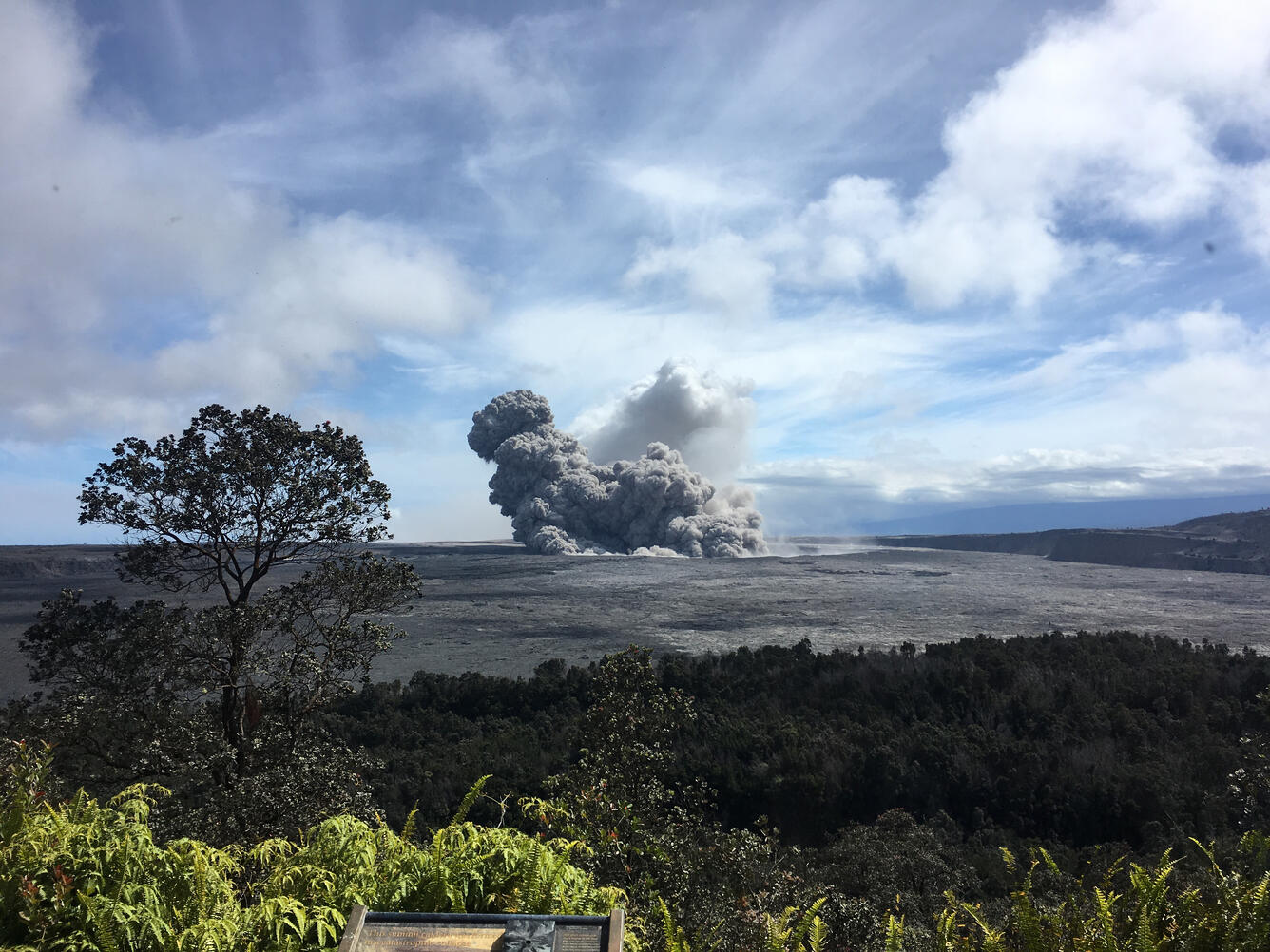In May 2018, Kīlauea volcano in Hawai’i erupted repeatedly in quick succession, driving ash more than 9,000 meters (30,000 feet) into the sky. Although the damage to the towns below swallowed by lava looked tragically familiar, the eruptions had features so unusual that volcanologists have been studying them for six years, eventually identifying a new cause to explain them.
When the eruption of the Halema’uma’u crater first occurred, it was compared to the same volcano’s 1924 eruption. It was a joy to study, from the production of pyrocumulus clouds to blue fire caused by escaping methane gas. We even got some brief new islands.
Explosive volcanic eruptions are usually attributed to either magma fragmenting during decompression or vaporized groundwater. Often, it’s a little from column A, a little from column B, to the extent that volcanologists place eruptions on a phreatic-magmatic spectrum for how much each contributed.
However, Dr Josh Crozier, who explored the Kīlauea event for his PhD at the University of Oregon, said in a statement: “These eruptions are quite interesting in that they don’t really seem to involve either of those. The eruptive material contained very little that looked like fresh magma that was blasted out, but there’s no evidence for significant groundwater being involved, either.”

The eruption as seen from a (possibly) safe distance.
Image Credit: United States Geological Survey
At another volcano, the mystery might have remained, but Kīlauea is covered with sensors. Moreover, there were plenty of opportunities to watch the event repeat, since while they differed from other eruptions, the 12 explosions in 10 days were consistent with each other. “This remarkably repeatable sequence is among the best recorded explosive eruptions in the world,” Crozier and co-authors write.
The lava flows that caused so much damage came from magma draining from an underground reservoir 40 kilometers (25 miles) away. Crozier and colleagues concluded that the falling magma caused a series of earthquakes above, bringing crustal material down and increasing pressure in the reservoir. The quakes had an average magnitude of 4.7, so these were not small events.
Besides the depleted magma, the reservoir contained magmatic gas and rubble, which the pressure increase blasted through a vent into the crater above. The researchers call this the “stomp-rocket” effect, after the toy launched by stepping hard on an air bag.
“The ‘stomp’ is this whole kilometer-thick chunk of rock dropping down, pressurizing the pocket, and then forcing material directly up,” Crozier said. The tube in this case a 600-meter (2,000-foot) conduit to the surface and the rocket around 3,000 cubic meters (106,000 cubic feet) of particles, around the volume of an Olympic swimming pool, released every second.
Proving the stomp-rocket effect was responsible may be impossible at this point, but Crozier and co-authors performed modeling they say shows the explanation is plausible.
A tip for anyone thinking of building their house on a volcano; calderas collapse a lot. The circumstances will not always be right for stomp-rocketing, but it’s probably happened many times without volcanologists having the information to detect it. Indeed, based on the limited data from the 1924 eruption of the same volcano, the authors think the same mechanism could have been responsible, although with eruptions following collapse earthquakes elsewhere.
The combination of extensive monitoring and the repeated event allowed volcanologists to link the properties of the plume the eruption produces with the geophysical observations.
“This link is very rare,” said Professor Joe Dufek. “It points to new ways for us to observe eruptions and to combine sensor measurements with computer simulations to better assess hazards from eruptions.”
The study is published in Nature Geoscience.
Source Link: Kīlauea Reveals A New “Stomp Rocket” Type Of Volcanic Eruption